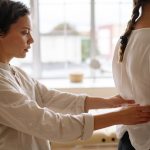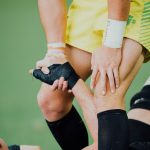Throughout the course of this month we have gone through everything from Osteoarthritis and running, the “Gym Knee” and the mechanics behind that, and why resting is not always the best option for your knee.
To close out our “Knee Health Month”, we’re going to show you a couple of things to help Bulletproof your knees from future injuries!
Get Strong!
Being strong throughout your body, but especially through your lower body is one of the biggest preventers for knee injuries!
This doesn’t mean being strong just through your quads. As we now know from some of our previous blogs, your knee mechanics are impacted by multiple muscles and joints both above and below the knee – so you should be strong both above and below your knee!
Glutes & Deep Hip Rotators
Your glutes and deep hip rotators (DHR) are responsible for maintaining your femoral alignment when your foot contacts the ground. This means your glutes and DHR are responsible for keeping your thigh in the correct position when your foot hits the ground, to keep pressure off your knee structures.
Quadriceps & Hamstrings
Your quadriceps (quads) & hamstrings (HS) are the two main muscle groups acting directly on the knee to flex and extend the knee. Being strong through these two groups of muscles is not the only important thing to think about when talking about these opposing muscle groups. Being balanced through these muscles is as important as being strong through these muscles.
This means the amount of strengthening work and focus that is put into the quads, needs to also be put into the hamstrings.
Calves
While most people think of the calves as one large muscle in the lower portion of the leg, there are actually two separate muscles with two very different functions.
In the calf there is the soleus muscle, this is the muscle that sits right behind the tibia (shin), running from the heel to the top end of the tibia and fibula (shin bones). The soleus is used to help point the toes when the knee is bent.
The second, and better known muscle of the calf is the gastrocnemius (gastroc). This is the muscle that has the two bulging parts on the back of the leg, running from the heel across the back of the knee to the back of the femur (thigh). That’s right, the gastroc crosses the back of the knee!! This means the gastroc is also partially responsible for the bending of the knee, helping the HS.
Therefore if you’re not strong through your calves, especially the gastroc, you’re going to be putting too much pressure on your hamstrings to do all the flexing work through the knee.
Feet
The muscles in your feet are one of the most overlooked muscle groups when it comes to lower limb strength and control!
As the first point of contact with the ground, your feet need to be able to quickly adjust and adapt to the ground they’re in-contact with. Without strong muscles through the feet and an ability to adapt to the ground underfoot, your feet will move like a plank of wood, taking excess load. This excess load will be distributed further up the chain – ankle, knee, hip, loading structures that are not normally loaded in that direction, resulting in an injury.
Be Balanced!
When it comes to bulletproofing your knees, being balanced is not only about how long you’re able to stand on one foot.
To bulletproof your knees, you need to be balanced in a multitude of circumstances! Your body needs to be able to adapt and adjust to the environment in real-time, while maintaining your balance. This isn’t always when you’re standing in the middle of a nice quiet room on flat concrete flooring, it is more likely when you’re running down a mountain trail on an uneven gravel surface!
This means that you need to be challenging your balance in all sorts of different ways, single leg, eyes open/closed, on uneven surfaces (wobble boards, dura discs), jumping and landing on one foot, or hopping. All of these different surfaces and activities will help improve your ability to adapt and maintain your balance.
Be Mobile!
Flexibility and mobility are two separate concepts. Flexibility is the muscle ability to move through a range, while mobility is the body’s ability to control a joint through a range while protecting it from injury. This means in order to bulletproof your knees, you will need to be mobile through not only your knees, but also the joints above and below (hips & ankles). Without good mobility in all the joints, there is going to be excessive load running through one of the joints, again, resulting in an injury!
Where Physio can help!
Our physiotherapists at Leaders Sports & Spine Physiotherapy in Brisbane CBD have a wealth of knowledge on all joints throughout the body, and how they interact and affect each other.
This means if you’re already having pain through the knees with certain exercises or activities, they will be able to ascertain the causing factor, and identify the best possible solution for the problem.
Our Physiotherapist also have a wealth of knowledge surrounding biomechanical assessments. Meaning you may not be getting pain through the knees at the moment, but you want to make sure you’re doing everything you can to help prevent yourself from getting pain – we will be able to assess your biomechanics for any weak links in the kinetic chain – to get ahead of the pain!






